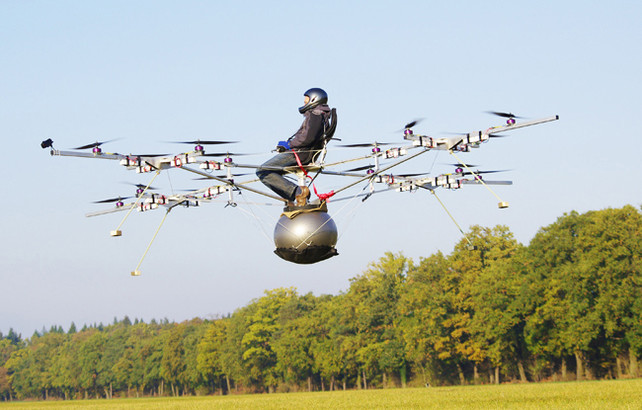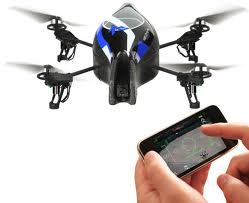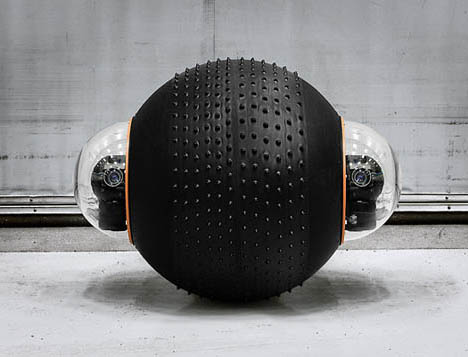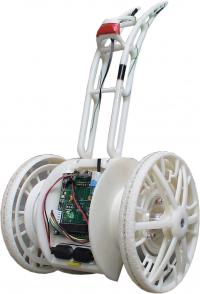Journalists love to use the phrase “a bit like a Segway” in stories, as they scramble for ways to describe a wide variety of new devices or proposed designs. Yet, usually, the object is not really “like” a Segway Personal Transporter (PT) at all.
For example, take this “Segway for the air” story that appeared online this week, about the E-volo, world’s first electric mutlicopter. This device balances and hovers in the air automatically and – like the Martin Jetpack – is controlled by a simple “fly by wire” joystick while computers, gyroscopes and other sensors do the heavy lifting control. The first link includes a video of the first flight, and this one includes some alternative design illustrations.
The E-volo is a fascinating design, and perhaps the natural extension of the Parot AR Drone. But with the pilot sitting atop 16 spinning blades, it could all end rather badly…. That said, like the Segway PT it has redundancy built in, and can continue to operate safely even if up to 4 motors and blades should fail. In Engineering, the term “redundancy” means duplication of capability to increase reliability, so that in the event of a failure of one resource the “spare” resource ensures continued normal operation.
Readers of Segway New Zealand News archives can find our coverage of other self-balancing devices, including the SoloWheel, the YikeBike, a one-wheeled motorcycle, and the telepresence Anybot.
Destined to be popular with dictatorships and police states in the future is the “Sort of Segway-Roomba-Pilates Surveillance Ball“. The Rotundus “Groundbot” manages to be both cool and creepy at the same time!
At 60cm diameter, the Groundbot is larger than it appears in the video in the link above. It weights 25kg, cruises across seal, sand, snow, mud and….because of its low density….it even floats!
Many universities and research labs are experimenting with self-balancing machines. For example, the Coordinated Robotics Lab at the University of California San Diego has built the iFling, aradio-controlled robot described as a “self-righting little Segway-like vehicle” designed to pickup and throw ping-pong balls. The video shows just how incredibly agile this device is, and how cleverly the design has been refined over three iterations.
Here in New Zealand, Auckland University purchased two Segway PTs in 2005. One of these is regularly dismantled and reassembled by Mechanical Engineering students as part of their degree. The platform has been made self-balancing and capable of remote control, and these enterprising young minds have also been known to fit it with a “frickin laser beam.”
Researchers and businesses looking to build their own applications that utilise a self-balancing platform can use a Segway RMP Robot Mobility Platform. The Segway RMP range offers a family of statically and dynamically balanced platforms that offer powerful, robust solutions with exceptional range and capabilities.






Leave a comment